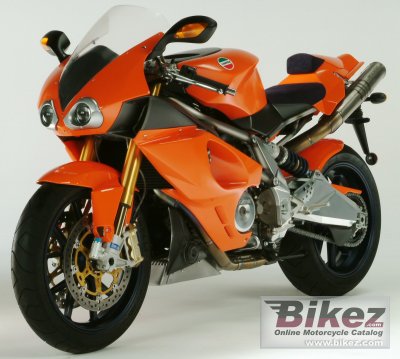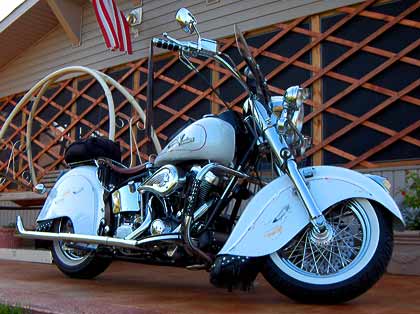 Ducati Sport Classics
Ducati Sport Classics Ducati Sport Classics
Ducati Sport Classics





 The 1988 Laverda SFC 1000 features the trademark Laverda triple-cylinder engine. |
Laverda's first motorcycle was a small, single-cylinder bike produced in the postwar era to test the waters of the market. It proved a raging success, and thus began the company's foray into motorcycle manufacturing.
At first, single-cylinder bikes were all Laverda produced. Then, in the late 1960s, the company ventured a vertical twin, considered quite a risk at the time. It wasn't until 1972 that triples were offered, and it is these three-cylinder engines for which Laverda is best known in the United States.
At first, the three-cylinder engines were fitted with single-plane (360-degree) crankshafts that produced uneven firing intervals and an ungainly exhaust note.
Later, the crank- shaft received staggered 120-degree throws, resulting in a smoother cadence and more power as well.
The 1988 Laverda SFC 1000 sport-touring model featured in this article has a 981-cc triple, and engine that amassed an enviable record in racing over the years.
Marzocchi suspension at both ends combined a comfortable ride with capable handling, while a trio of disc brakes along with an antidive compensator fitted to the front forks ensured safe, controlled stops.
Because it was not intended for export, the 1988 Laverda SFC 1000 motorcycle is a rare sight on U.S. roads. Yet, in many respects, it was better suited to American tastes than many of the exotic machines that found their way to these shores during the 1980s.




In 1940, all models were fitted with the large skirted fenders that became an Indian trademark, and the Chief gained a new sprung frame that was superior to rival Harley's unsprung rear end. The 1940s Chiefs were handsome and comfortable machines, capable of 85 mph (137 km/h) in standard form and over 100 mph (160 km/h) when tuned, although their increased weight hampered acceleration.
In 1950, the V-twin engine was enlarged to 1,300 cc (79 cubic inches) and telescopic forks were adopted. But Indian's financial problems meant that few bikes were built. Production of the Chief ended in 1953.
 | |
| Type | LLC |
|---|---|
| Founded | 1901 |
| Founder(s) | George M. Hendee Carl Oscar Hedström |
| Headquarters | Springfield, Massachusetts, USA |
| Key people | George M. Hendee Carl Oscar Hedström (designer) Charles B. Franklin (designer, racer) |
| Products | Motorcycles |